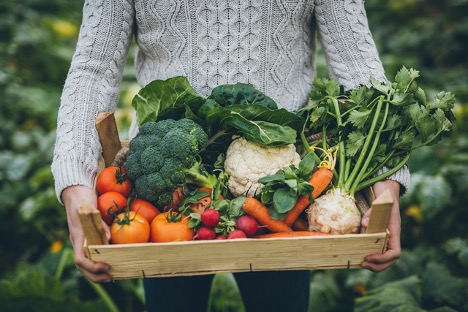In a world where minimizing food waste is becoming increasingly important, James Breuhl believes that learning how to extend the freshness of your produce is a valuable skill. Whether you’re an avid gardener reaping a bountiful harvest, a farmers’ market enthusiast, or simply looking to make the most of your grocery buys, there are numerous techniques to keep your fresh foods fresher for longer. This article delves into these methods, ensuring that your fruits, vegetables, and other perishables maintain their quality and nutritional value.
James Breuhl on Understanding Food Freshness
Before diving into preservation techniques, it’s crucial to understand what makes food go bad. Fresh produce, dairy, and meats are perishable due to their high moisture content and natural composition, which make them susceptible to decay, mold, and bacteria. Factors like temperature, humidity, and exposure to air can accelerate this process. By controlling these elements, you can significantly extend the shelf life of your fresh foods.
James Breuhl on Refrigeration: The First Line of Defense
The refrigerator is your best friend when it comes to food preservation. However, it’s not just about throwing everything in the fridge. Different foods require different refrigeration strategies:
- Fruits and Vegetables: Some fruits emit ethylene gas, which can accelerate ripening (and spoiling) in other produce. Store ethylene-producing fruits like apples and bananas separately from sensitive vegetables like leafy greens. Vegetables like lettuce and spinach benefit from being wrapped in a damp cloth or paper towel to maintain humidity.
- Dairy Products: Keep dairy products in their original packaging, which is designed to maintain freshness. Store them in the coldest part of the fridge, usually at the back, rather than the door where temperatures fluctuate.
- Meats and Fish: Store raw meat and fish in the coldest part of your refrigerator or in the freezer if you’re not planning to use them within a couple of days. Use airtight containers or vacuum-seal bags to prevent cross-contamination and flavor transfer.
James Bruehl on Freezing: Long-Term Preservation
Freezing is a great option for long-term preservation, especially for fruits, vegetables, and meats. When done correctly, freezing can preserve the taste, nutritional value, and texture of foods:
- Blanching Vegetables: Before freezing vegetables, blanch them in boiling water for a few minutes and then plunge them into ice water. This process preserves color, flavor, and nutrients.
- Freezing Fruits: To freeze fruits like berries without them sticking together, spread them on a baking sheet to freeze individually before transferring to a container.
- Airtight Packaging: Use airtight containers or vacuum-seal bags to prevent freezer burn and preserve quality.
James Breuhl on Dry Storage: For Pantry Staples
Some foods do best in a cool, dry pantry. This includes most root vegetables, onions, garlic, and hardy squashes. Keep them in a well-ventilated area away from light, which can lead to sprouting or flavor loss.
James Breuhl on Canning: Preserving the Harvest
Canning is a time-honored method of preserving fruits, vegetables, and even meats. There are two main methods: water bath canning and pressure canning.
- Water Bath Canning: Ideal for high-acid foods like fruits, tomatoes, and pickles. The jars are submerged in boiling water, creating a vacuum seal that prevents bacteria growth.
- Pressure Canning: Necessary for low-acid foods like vegetables and meats. This method uses higher temperatures than water bath canning to ensure food safety.
Dehydrating: A Flavorful Alternative
Dehydrating is an excellent way to preserve fruits, vegetables, and herbs while concentrating their flavors. You can use a food dehydrator or a low-temperature oven setting. The key is removing enough moisture to prevent spoilage but retaining some for texture and taste.
- Herbs: Dehydrate fresh herbs like basil, parsley, or mint for use in cooking.
- Fruit Leathers: Puree fruits and dehydrate them into healthy, homemade fruit leathers.
James Breuhl on Pickling: Not Just for Cucumbers
Pickling isn’t limited to cucumbers; many vegetables and even some fruits can be pickled. The acidic brine prevents bacterial growth, and the flavor options are endless.
- Quick Pickles: Quick or refrigerator pickles are a simple way to preserve cucumbers, carrots, radishes, and more without the need for canning.
- Fermented Pickles: For the adventurous, try fermenting vegetables like sauerkraut or kimchi, which also offer probiotic benefits.
James Breuhl on Creative Storage Solutions
- Herb Ice Cubes: Freeze fresh herbs in olive oil or water in ice cube trays for easy addition to future dishes.
- Root Cellars: For those with the space, root cellars provide the perfect environment for storing large quantities of root vegetables and hardy fruits like apples.
James Breuhl is hopeful these tips will help readers not only enjoy fresh food longer, but limit the amount of food that is wasted, especially during the holiday season.









